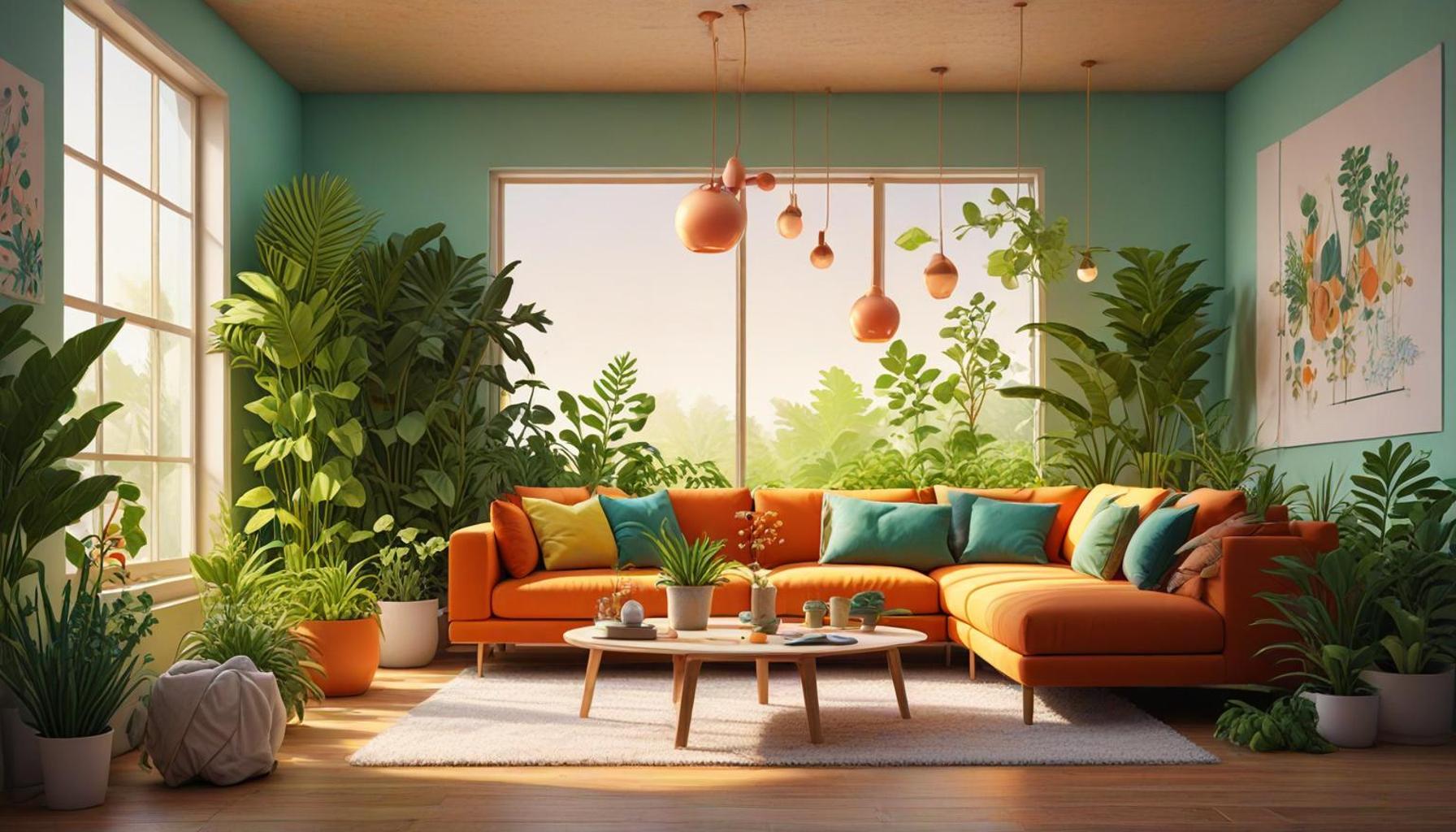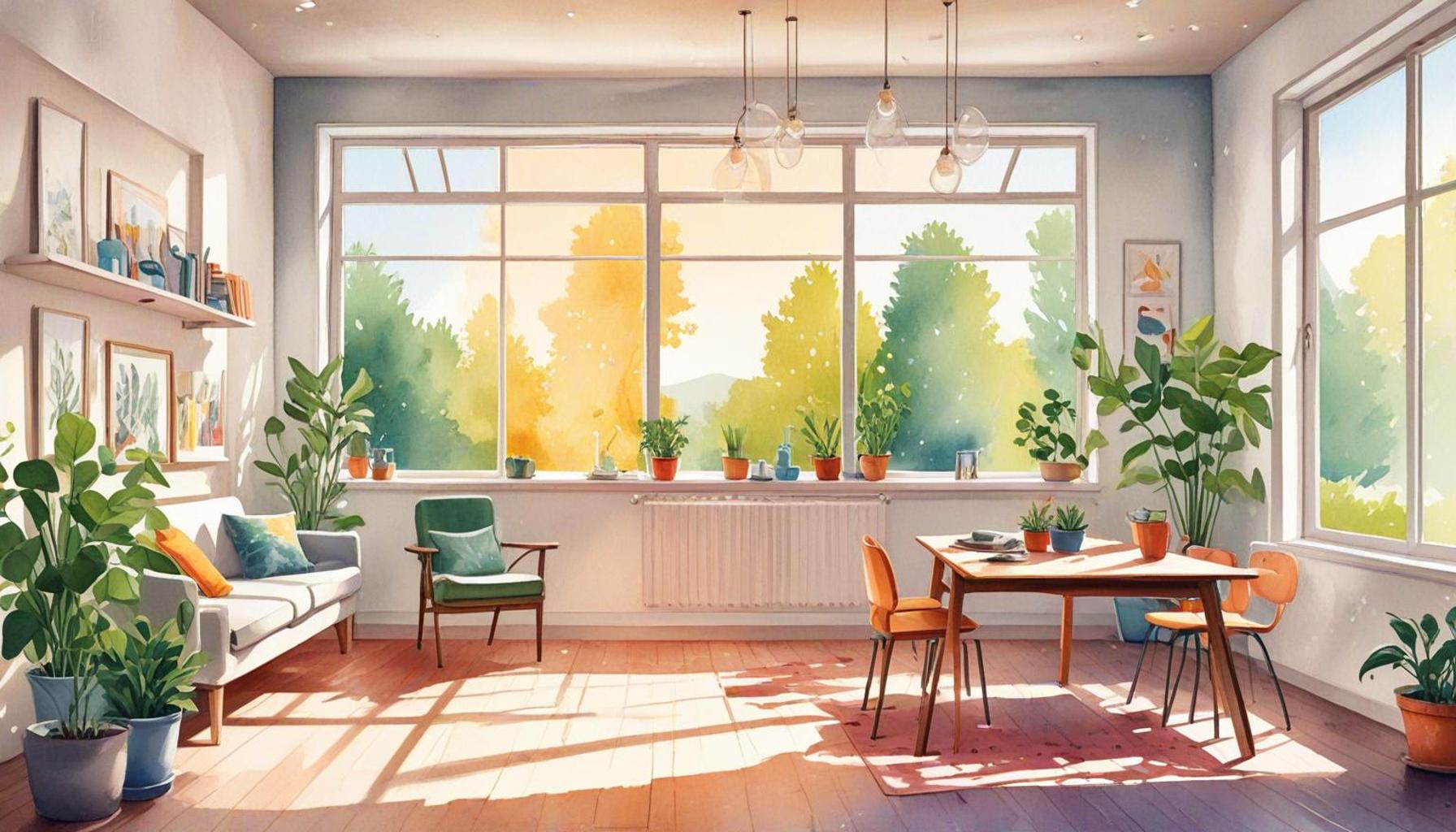Principles of Biophilic Design for Creating Minimalist and Efficient Spaces

The Benefits of Biophilic Design in Modern Living
In today’s hectic lifestyle, where urban sprawling often overshadows nature, the importance of designing living spaces that echo the essence of the outdoors cannot be overstated. Among the various approaches to achieving this balance, biophilic design stands out as one of the most innovative and impactful. This design philosophy not only focuses on aesthetics but also emphasizes the essential human need to connect with nature, ultimately creating harmonious environments that enhance overall well-being.
One of the fundamental reasons to incorporate biophilic principles in our designs is their significant impact on mental health. Studies have consistently demonstrated that the presence of natural elements—whether through views of greenery or the use of organic materials—can lower cortisol levels, a hormone closely tied to stress. For instance, incorporating large windows that offer views of trees, parks, or gardens can create a serene backdrop that promotes relaxation and introspection. Additionally, indoor features such as water fountains or even a small indoor pond can contribute to a calming atmosphere that reduces anxiety and enhances focus.
Furthermore, biophilic design plays a pivotal role in fostering enhanced creativity. Spaces that incorporate natural light and organic shapes have been found to stimulate innovative thinking. For example, a minimalist office designed with wood accents and ample natural light can inspire brainstorming sessions and collaborative efforts among teams. Companies like Google and Apple have adopted such principles in their campuses, leading to increased productivity and employee satisfaction. The idea is simple: when we are surrounded by nature, our cognitive functions improve, leading to innovative ideas and solutions.
Additionally, one cannot overlook the aspect of energy efficiency that biophilic design offers. Leveraging elements such as passive solar heating or natural cross-ventilation not only reduces reliance on artificial heating and cooling but also promotes sustainability. Buildings designed with strategically placed windows allow for maximum daylight exposure, reducing the need for artificial lighting during the day. This dual benefit of lowering energy bills while fostering a connection to the outdoors is particularly appealing in a climate-conscious society, where sustainability is becoming a key consideration in home design.
As we explore the various facets of biophilic design, it becomes evident that these principles can successfully transform our living spaces into tranquil sanctuaries. From the implementation of indoor plants to the careful selection of materials that reflect the organic world—such as stone, wood, and natural fibers—this approach is not merely about decoration. It’s about enhancing our experience in enclosed environments, allowing us to thrive both individually and collectively. As biophilic design continues to gain traction, it encourages us to rethink our homes, workplaces, and public spaces as extensions of the natural world, reminding us that our surroundings can profoundly influence our lives.
DISCOVER MORE: Click here for decluttering tips
Embracing Nature: Key Principles of Biophilic Design
At the core of biophilic design are several fundamental principles that create synergy between nature and the spaces we inhabit. By effectively integrating these principles into minimalist design, we can foster environments that are not only aesthetically pleasing but also functional and efficient. Understanding these principles can serve as a blueprint for anyone looking to create spaces that benefit both the body and mind.
1. Natural Elements
One of the primary tenets of biophilic design is the introduction of natural elements into built environments. This can include features such as:
- Indoor plants: Integrating a variety of plants can improve air quality and create a calming atmosphere.
- Water features: Incorporating elements like indoor water fountains can enhance sensory experiences and contribute to tranquility.
- Natural materials: Using materials such as wood, stone, and bamboo evokes a sense of being connected to nature.
These elements not only soften the hard lines of modern architecture but also provide essential psychological benefits, fostering a deeper connection with nature.
2. Natural Light and Ventilation
Maximizing natural light and facilitating proper ventilation are crucial aspects of biophilic design. Designing windows that allow ample daylight to flood into a space does wonders for both energy efficiency and well-being. This can be achieved through:
- Skylights: Strategically placed skylights can substantially increase the amount of light in a room.
- Large windows: Floor-to-ceiling windows can connect interior spaces with the outdoors, amplifying views of natural landscapes.
- Cross-ventilation: Designing spaces to facilitate airflow reduces dependence on artificial cooling systems, promoting sustainability.
Not only does natural light enhance mood and cognitive functioning, but it also creates a dynamic and ever-changing ambiance that adjusts with the environment.
3. Reflection of Nature
Biophilic design encourages the inclusion of organic forms and patterns that mimic nature. This principle focuses on creating visual harmony between the built environment and the natural world. The use of curves, textures, and colors found in nature can be expressed through:
- Architectural details: Incorporating flowing lines in furniture, wall designs, or ceilings can evoke imagery of natural landscapes.
- Color palettes: Utilizing earth tones and hues inspired by nature’s palette can generate a sense of warmth and comfort.
- Biomorphic designs: Creating shapes that resemble flora and fauna can add subtle connections to nature within interior environments.
The ultimate goal is to create an immersive experience that continuously reminds inhabitants of the beauty and tranquility that nature provides.
Incorporating these core principles of biophilic design into minimalist spaces not only elevates their functionality but also allows for a more profound connection to our environment. By merging the natural and built worlds, we can achieve efficient and serene spaces that cater to both our physical and emotional needs.
Exploring the Core Advantages of Biophilic Design
Biophilic design emphasizes the connection between humans and nature within our built environments, leading to not only aesthetic improvements but significant psychological and physiological benefits. This design approach is rooted in the understanding that natural elements can enhance our well-being, productivity, and overall happiness. By seamlessly integrating aspects of nature into minimalist spaces, biophilic design fosters an environment conducive to relaxation and inspiration.Among the essential elements of biophilic design is the inclusion of natural light, which has a profound impact on mood and energy levels. Studies have shown that exposure to sunlight can reduce stress and increase concentrations, contributing to a more efficient working environment. Furthermore, the use of natural materials such as wood, stone, and water elements connects occupants to nature, providing a calming atmosphere that enhances mental clarity.Here’s a closer look at the advantages of integrating biophilic principles into your minimalist design:
| Advantage | Details |
|---|---|
| Enhanced Well-Being | Exposure to natural elements reduces stress and anxiety levels. |
| Improved Productivity | Natural light and greenery boost energy and creativity, leading to better focus. |
Implementing these principles not only transforms spaces but also encourages a mindful approach to design, ensuring that our environments work harmoniously with our innate needs. The incorporation of nature creates a sustainable framework that promotes not just the functionality of spaces but the holistic health of their occupants, ultimately redefining how we experience our surroundings.
DISCOVER MORE: Click here to learn about the power of letting go
Cultivating Connection: Advanced Principles of Biophilic Design
Delving deeper into the essence of biophilic design, we uncover additional principles that enhance our connection to nature, creating spaces that are not just efficient but also enriching. These principles, when applied thoughtfully, can transform minimalist settings into sanctuaries of peace and productivity.
4. Integrative Landscapes
Integrative landscapes emphasize the importance of harmonizing built environments with their surrounding ecology. This approach encourages the use of native plant species in landscaping, fostering biodiversity and reducing maintenance needs. Here are key elements to consider:
- Native greenery: Utilizing plants that are indigenous to the area not only supports local wildlife but also enhances resilience to regional climates.
- Green roofs and walls: These features provide insulation, reduce urban heat, and offer unexpected green spaces, even in dense urban settings.
- Wildlife habitats: Including features such as birdhouses or bee hotels promotes biodiversity and enhances the ecosystem within and around the built spaces.
This principle ultimately creates a symbiotic relationship between the architecture and the natural world, enhancing the user experience through richer interactions with nature.
5. Dynamic and Changeable Environments
Another compelling aspect of biophilic design is the principle of dynamism—creating spaces that allow for flexibility and adaptability. Such environments respond to changing needs and conditions. This can be achieved through:
- Modular furniture: Multi-functional furniture that can be rearranged or adapted for various activities enhances the usability of minimalist spaces.
- Transformative layouts: Spaces that can cater to different events or atmospheres through movable walls or partitions offer versatility while maintaining minimalism.
- Seasonal responsiveness: Designing spaces that change with the seasons—whether through adjustable shading, using light-activated materials, or even projectors that alter visual environments—keeps the experience fresh and engaging.
This fluidity mirrors natural processes and creates vibrant living spaces that maintain emotional resonance over time—making them feel less static and more alive.
6. Sensory Experiences
Beyond the visual connection to nature, biophilic design also seeks to stimulate the other senses. Incorporating sensory elements enhances the overall experience in minimalist environments. Key sensory features include:
- Sounds of nature: Integrating soundscapes, such as running water or birdsong, can elevate mood and create a serene environment, bringing the outdoors inside.
- Natural scents: Utilizing materials that retain the earthy aroma of wood, or even strategically placing herb gardens, can induce a calming effect.
- Textural variety: Mixing textures—smooth stones, rough woods, soft fabrics—invites tactile exploration, making spaces more engaging.
These sensory experiences deepen our connection to nature, providing benefits to our mental health, productivity, and overall well-being.
By embracing these advanced principles of biophilic design, we can create minimalist spaces that resonate deeply with our innate preferences for nature. These spaces not only function efficiently but also nurture our connection to the environment, ultimately contributing to our quality of life in a fast-paced world. The exploration of these principles can lead to innovative design solutions that celebrate the beauty of the natural world within contemporary contexts.
DISCOVER MORE: Click here to learn how intentional property can enhance your personal organization
Conclusion: Embracing Biophilic Design for Sustainable Minimalism
In conclusion, the principles of biophilic design offer a transformative framework for creating minimalist and efficient spaces that resonate deeply with our intrinsic connection to nature. By integrating elements such as native landscapes, dynamism in environment, and sensory experiences, designers can enhance not only the aesthetic appeal of a space but also its functionality and emotional impact. The harmonious synthesis of architecture and ecology fosters an atmosphere of tranquility and inspiration, nurturing our well-being in an increasingly artificial world.
Moreover, as urbanization continues to rise, incorporating biophilic elements becomes paramount in combating the isolating effects of modern living. From the utilization of green roofs to adaptive modular furniture, each aspect of biophilic design emphasizes sustainability and purpose. This approach invites individuals to reevaluate how they interact with their surroundings, prompting a deeper appreciation for our natural environment.
As we look to the future, implementing these principles is not merely a trend but rather a necessity in the quest for healthier, more integrated living. Exploring the vast potential of biophilic design paves the way for innovative solutions that echo our connection to nature, reminding us that the spaces we inhabit have the power to positively shape our experiences. By prioritizing biophilic strategies in minimalist designs, we can create environments that are as enriching as they are efficient, ultimately enhancing our quality of life.


